Description
Doñihue queda a 100 Km. de Santiago, en la provincia del Cachapoal, capital de la región O’Higgins.
Tiene una larga historia como zona de haciendas criadoras de caballos, por lo que se le asocia a la figura del huaso a caballo, personaje icónico que representa a un individuo que trabaja en actividades agrícolas, tiene habilidades para montar a caballo y manejar el lazo.
El atuendo del huaso comprende las prendas de su vestuario y los aperos que éste usa en y con el caballo. La prenda más vistosa y distintiva es el chamanto.
A principios del siglo XX aparecen los chamantos, éstos eran tejidos en finos hilos de lana, teñidos con colorantes vegetales o con el color de las lanas compradas en el comercio. Desde 1935 el material usado en estas prendas es el algodón que es importado ya que no se produce en Chile.
En la producción tradicional textilera de Doñihue se identifican dos variedades: El Chamanto y la Manta Corralera. Ambos son esencialmente una tela cuadrada o rectangular con una abertura al centro para pasar la cabeza y cuelga desde los hombros. La diferencia entre ambas es que la primera lleva figuras llamadas labores y la manta, solo listaduras , listas longitudinales de colores.
La técnica de tejido es la faz de urdimbre y en el chamanto, la doble faz, (con cuatro capas de urdimbre) que permite realizar las figuras “labores”, que se ven en negativo por el lado contrario.
La composición del chamanto consta de cuatro zonas horizontales llamadas campos, intercaladas con otras tres zonas horizontales llamadas listaduras. que es donde lleva labor. En ambos costados van otras listas que son “el acompañado” que flanquean a estas listaduras con labor. Se teje en dos partes separadas: la parte central y la huincha que rodea todo su contorno lleva el mismo diseño de las listaduras y el acompañado. Es cocida a mano por todo el borde del chamanto.
El chamanto toma alrededor de tres meses de tejido, en cambio una manta se puede tejer en un mes.
El telar utilizado es vertical, estacado en una tarima de madera. Se usa en el interior de las casas.
Doñihue actualmente es reconocido por la producción única de las mantas y chamantos como actividad transmitida por generaciones.
English
Textiles of Doñihue
Doñihue is located 100 km from Santiago, in the province of Cachapoal, the capital of the O’Higgins region. It has a long history as an area of horse-breeding haciendas, which is why it is associated with the figure of the “huaso” on horseback, an iconic character that represents an individual who works in agricultural activities, has horse riding and lasso handling skills. The huaso’s attire comprises the garments of his wardrobe and the implements he uses on and with the horse. The most colourful and distinctive garment is the “chamanto”.
At the beginning of the 20th century, chamantos were woven from fine woollen yarn, dyed with vegetable dyes or with the colour of wool bought in the shops. Since 1935 the material used in these garments is cotton, which is imported as it is not produced in Chile. In the traditional textile production of Doñihue, two varieties can be identified: The Chamanto and the Manta Corralera. Both are essentially a square or rectangular cloth with an opening in the centre for the head and hanging from the shoulders. The difference between the two is that the former has figures called labores and the manta, only listaduras, longitudinal lists of colours.
The weaving technique is the warp face and in the chamanto, the double face, (with four layers of warp) which allows the figures “labores” to be made, which are seen in negative on the opposite side.
The composition of the chamanto consists of four horizontal areas called ‘campos’, interspersed with three other horizontal areas called ‘listaduras’, which is where the work is carried out. On both sides, other warps are the “accompaniment” that flank these listaduras. It is woven in two separate parts: the central part and the “huincha” which surrounds the whole of its outline has the same design as the listaduras and the “acompañado”. It is hand-woven all around the edge of the chamanto. The chamanto takes about three months to weave, whereas a blanket can be woven in one month.
The loom used is vertical, staked on a wooden platform. It is used inside the houses. Doñihue is now recognised for the unique production of blankets and chamantos, an activity that has been passed down through generations.


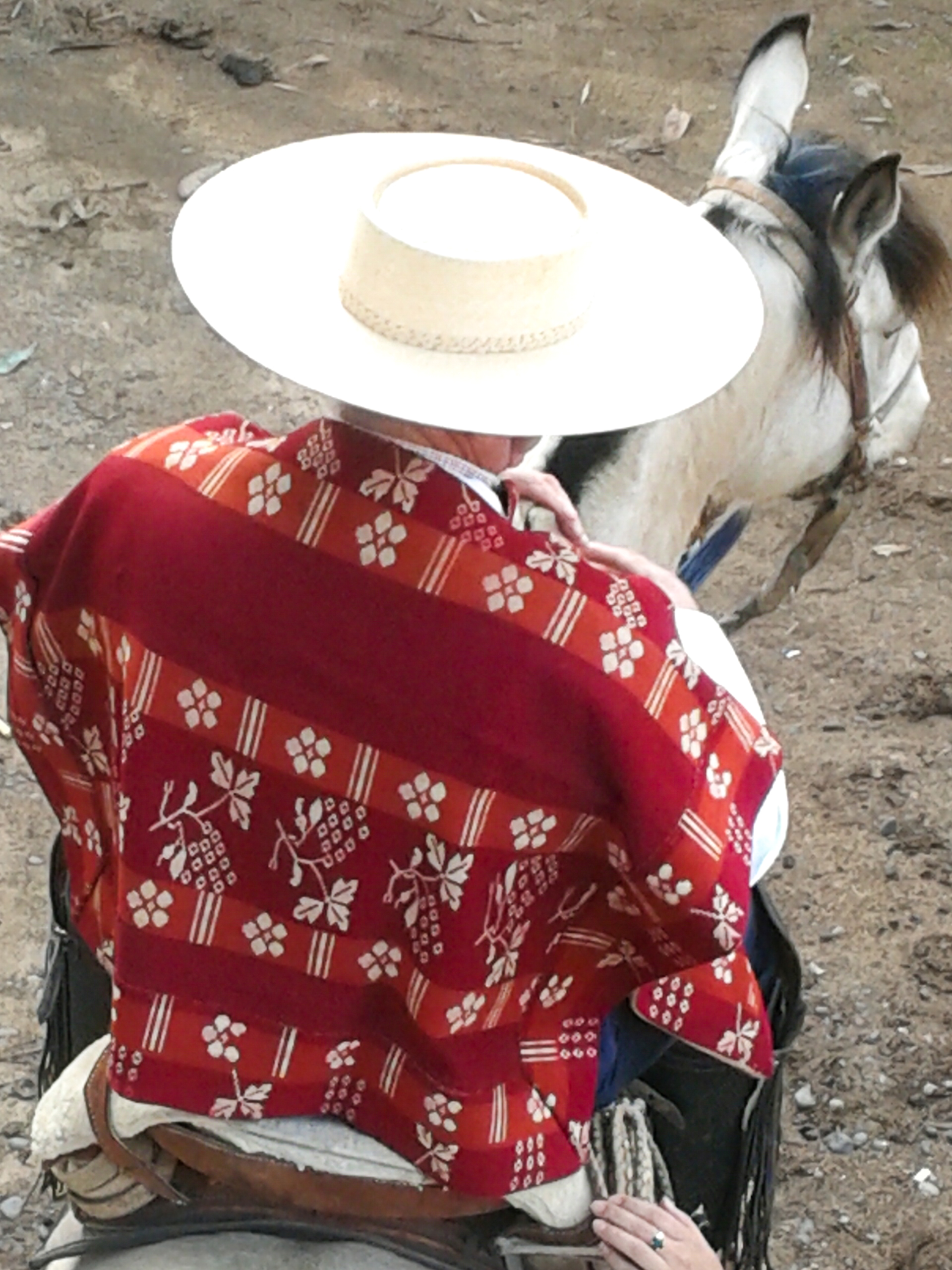
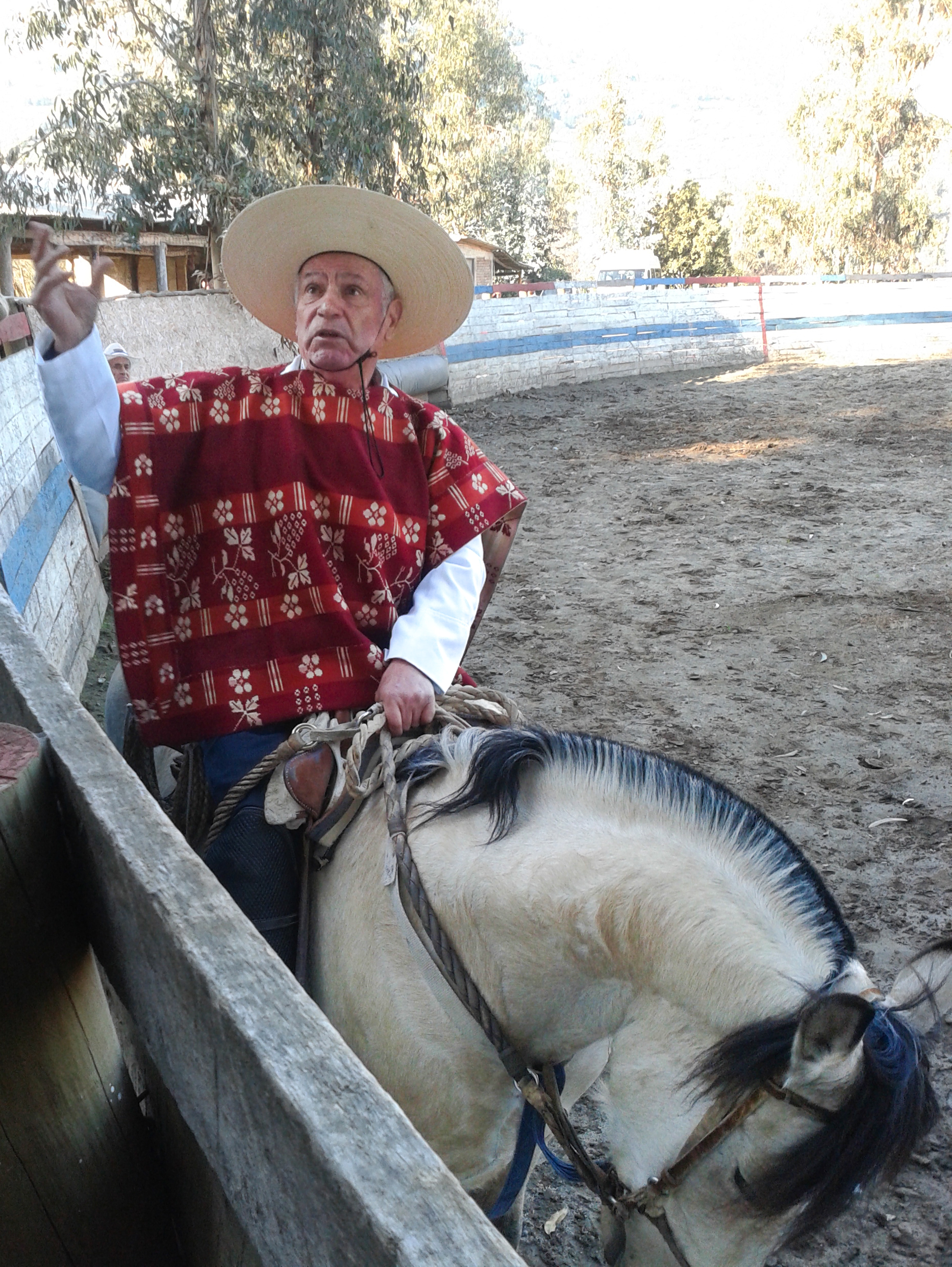
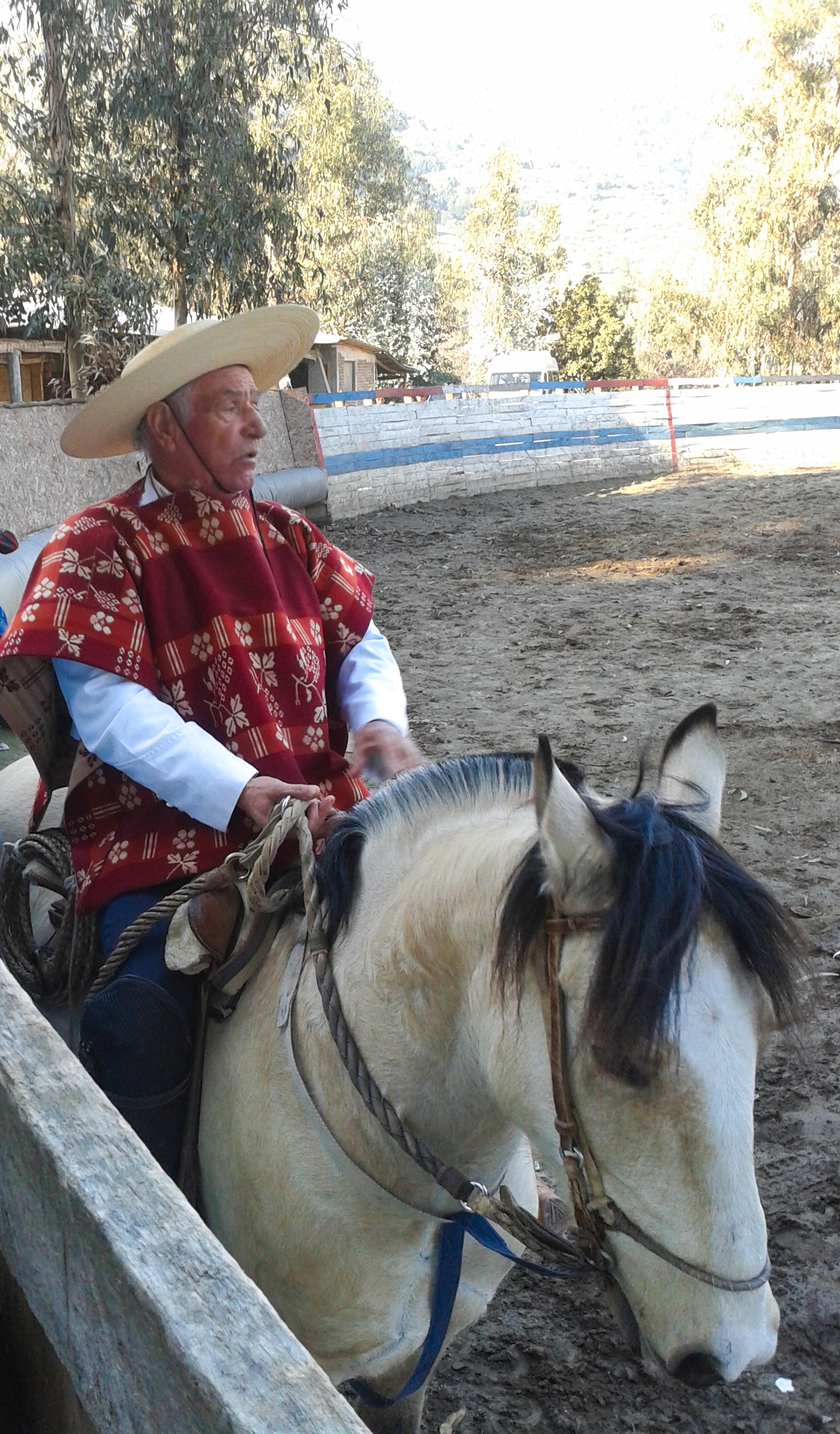
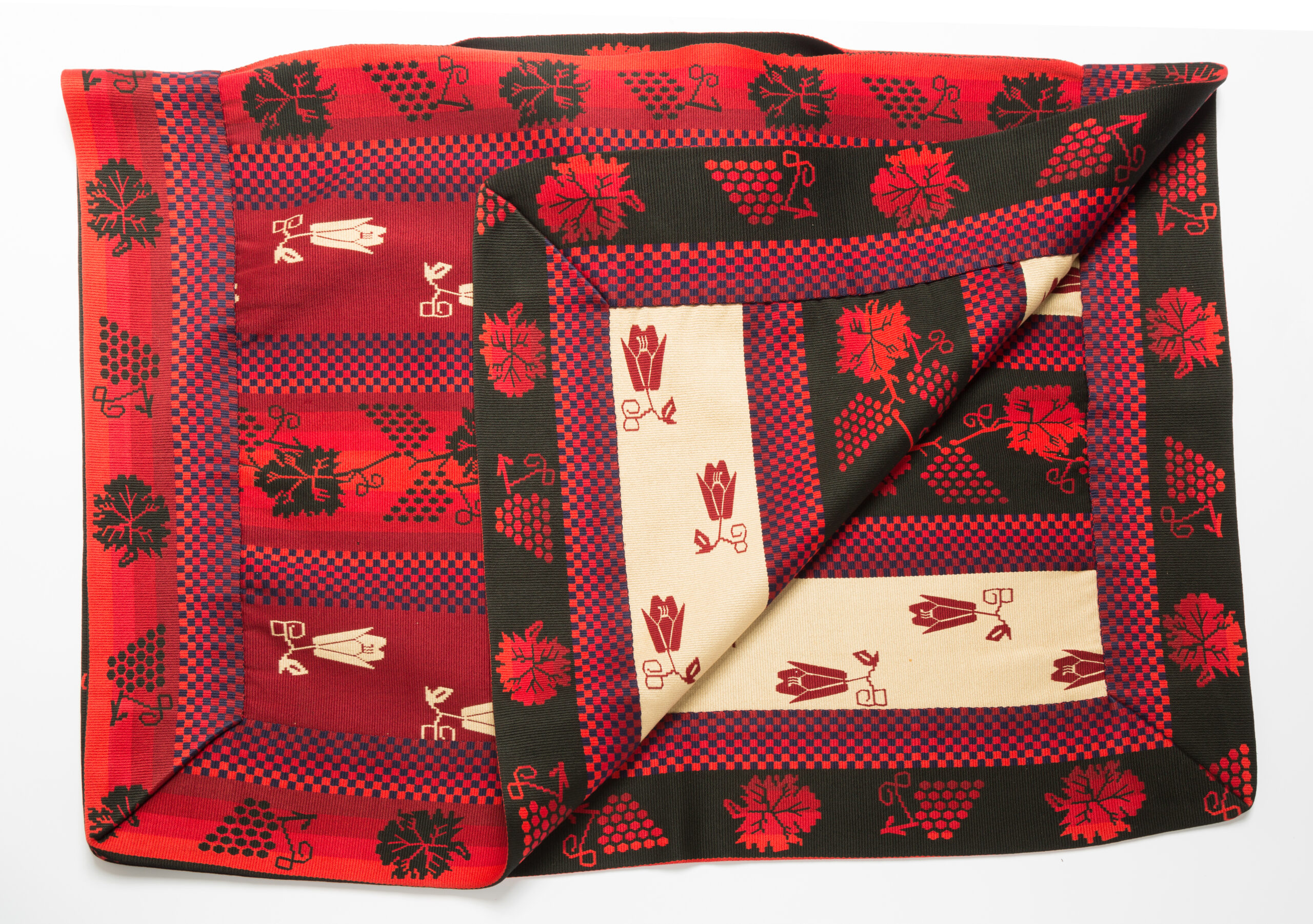
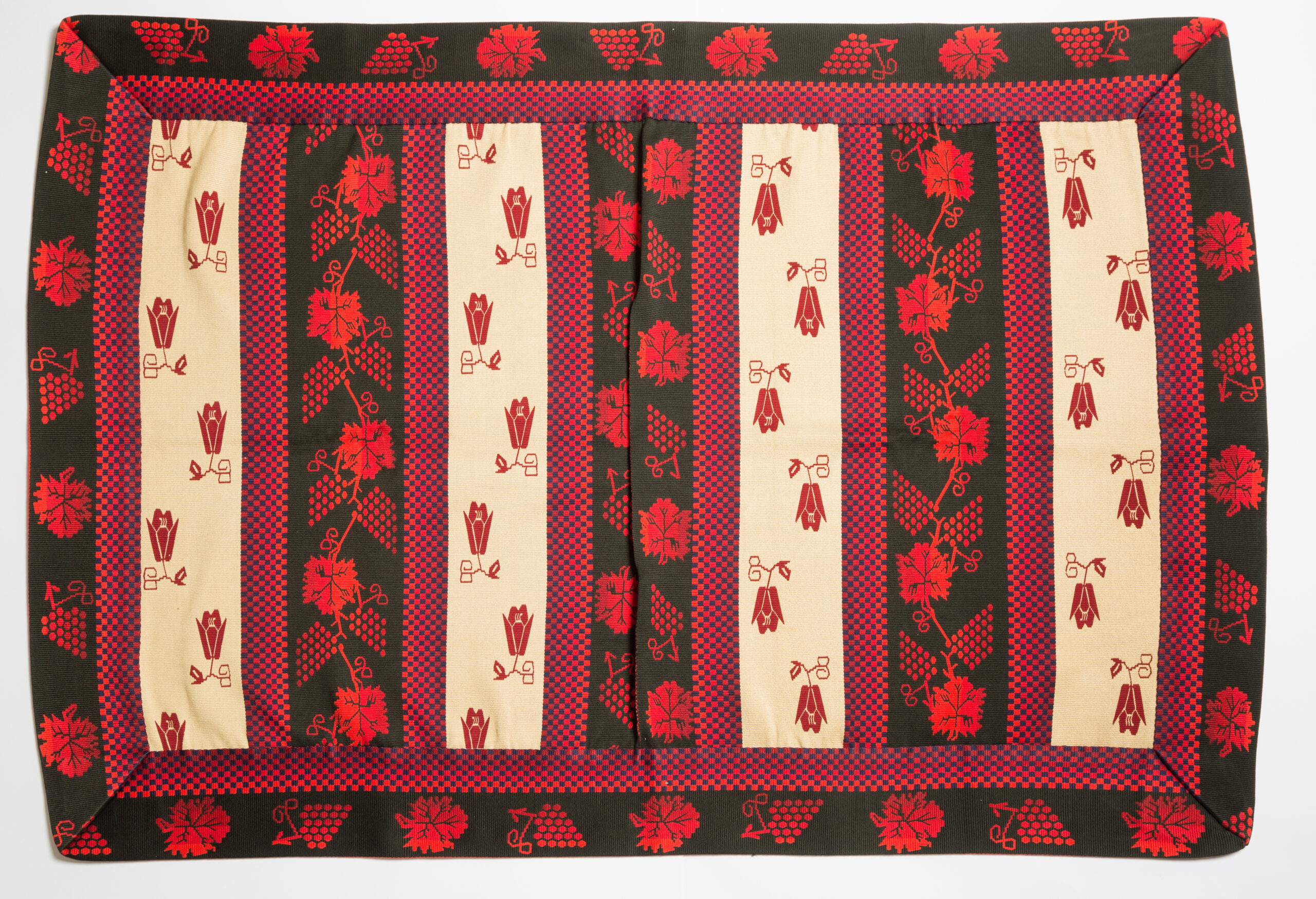
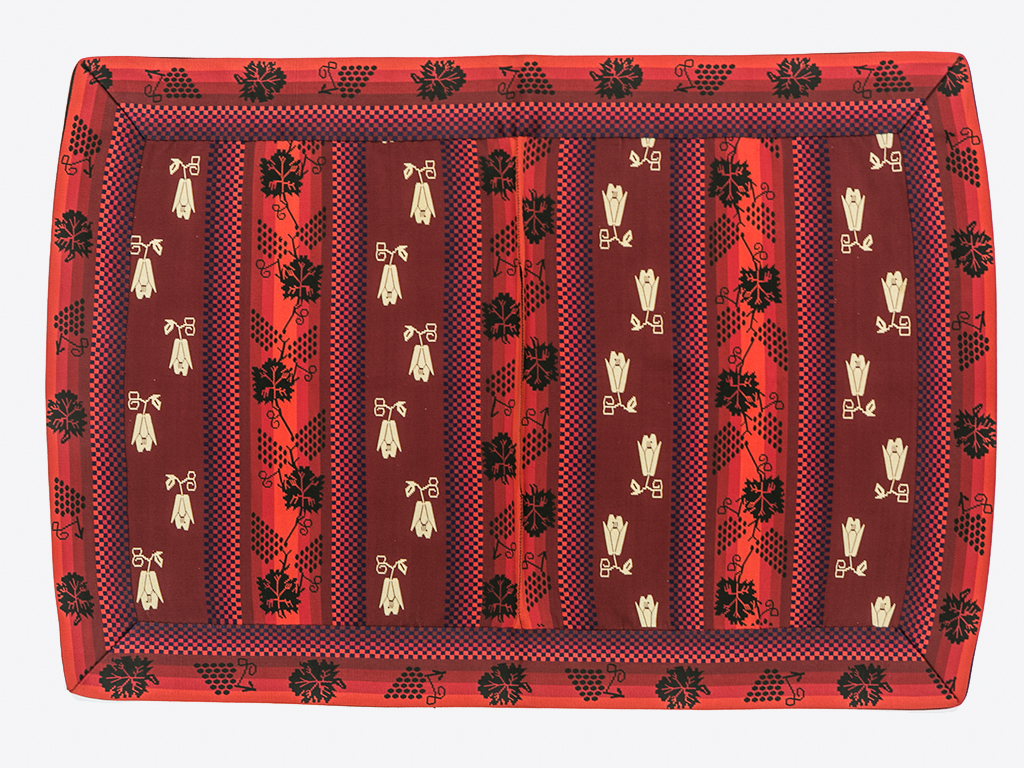
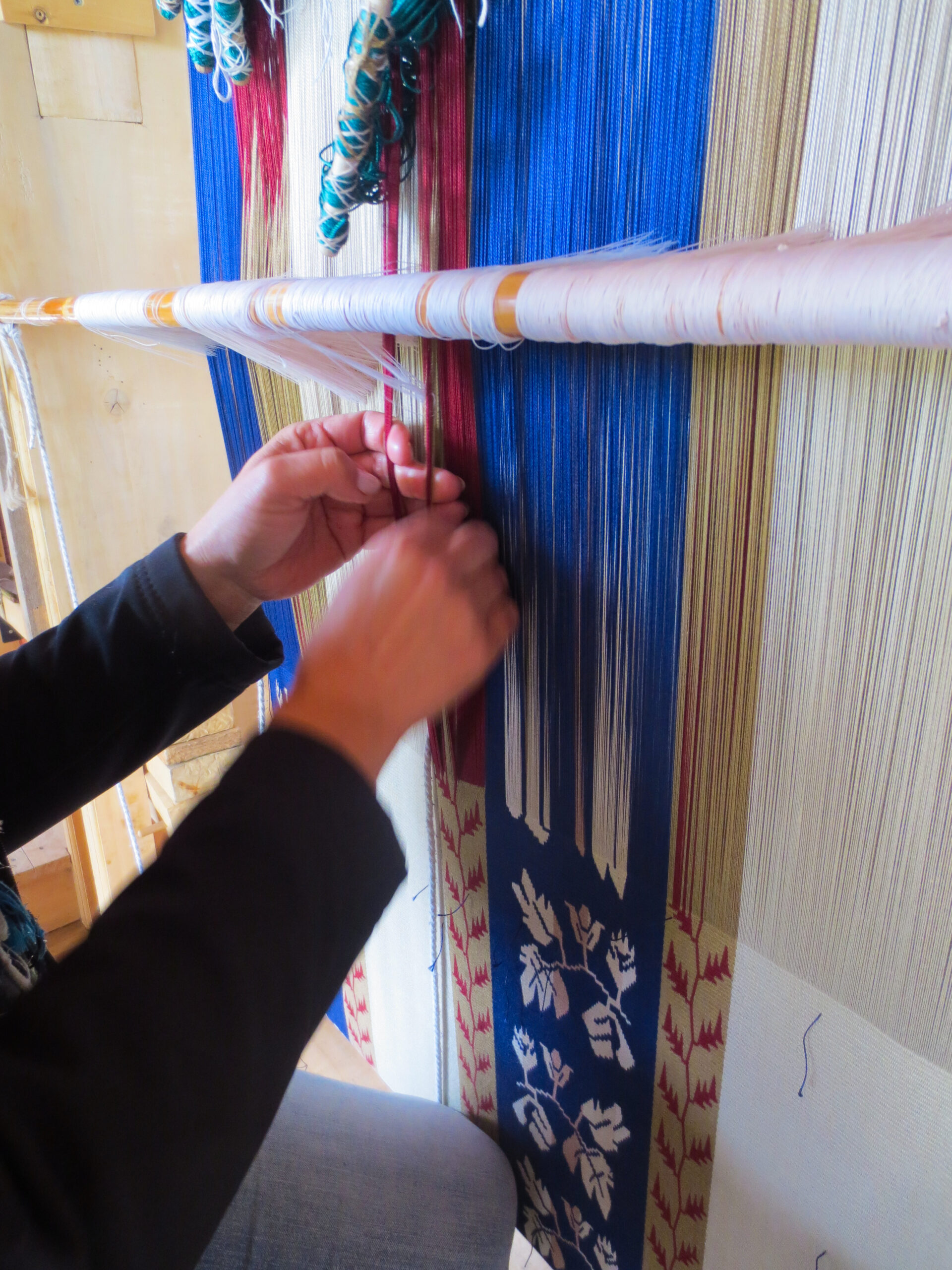
Reviews
There are no reviews yet.